-
solutinos
-
Hire
Frontend Developer
Backend Developer
-
NodeJS Developer
-
Java Developer
-
Django Developer
-
Spring Boot Developer
-
Python Developer
-
Golang Developer
-
Ruby on Rails Developer
-
Laravel Developer
-
.NET Developer
Technology
-
Flutter Developer
-
React Native Developer
-
Xamarin Developer
-
Kotlin Developer
-
Cross-Platform Developer
-
Swift Developer
-
MongoDB Developer
-
C Developer
-
Smart Contract Developers
Cloud
-
-
Services
Mobile Development
Web Development
- Work
-
Multi Services App
-
Food Delivery App
-
Grocery Delivery App
-
Taxi Cab Booking App
-
Multi Services App
-
OTT Platform APP
-
Social Media APP
-
Freelance Service App
-
Car Rental App
-
Medicine Delivery App
-
Liquor Delivery App
-
Sports Betting App
-
Online Coupon App
-
eLearning App
-
Logistics & Transportation App
-
Courier Delivery App
-
On-Demand Real Estate App
-
E-Wallet APP
-
Online Dating App
-
Handyman Services App
-
-
Process
-
Company
Ever wondered how do free apps make money? Many of you should have a question in your mind that if we are downloading any app from the app store, how the app developers can make money out of it? Well, we’re here to wipe out your thoughts and make your mind clear by elaborating things in the article. This article is for budding entrepreneurs who wish to start their journey and monetize an app or make money with apps to earn passive income by publishing free apps in the mobile app market.
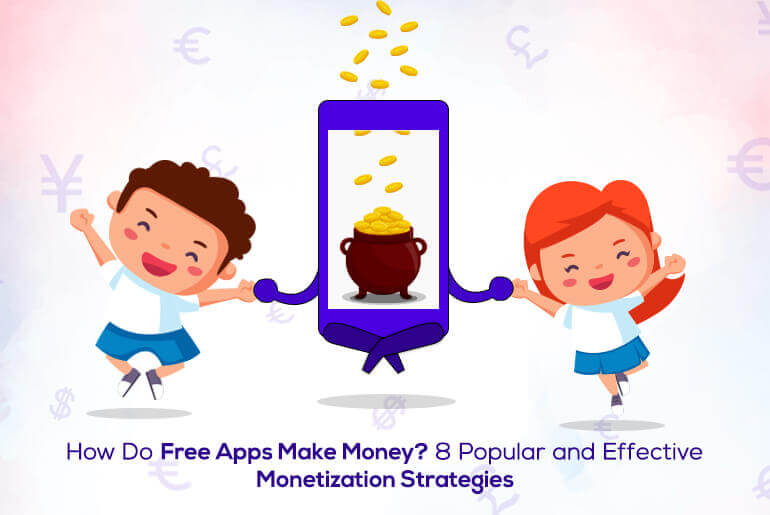
Most of the time, you download an app from the app store and simply start using it. Naturally, developers who offer apps for free expect payment or profit in some other form. If you’re planning to develop an app and are unsure how a free app brings profit, the following article provides clarification.
Let us tell you how famous free products made money off their apps, offer advice on how to choose an app monetization strategy, and check out which software tools to integrate. There’re 90% of the millions of apps available in Google Play or the iOS App Store which are completely free to download. Free apps play a huge role in the market, driving $71.3 billion revenue.
In a nutshell, there’re almost eight well-known monetization strategies from where free applications make money.
- Advertising (via banner, video, native ad, interstitial ad, incentivized ad)
- Referral Marketing (Amazon)
- In-App Purchase & Freemium Model (PokemonGO)
- Subscription Model (Wall Street Journal)
- Sponsorship (Weather Channel)
- Crowdfunding(Hello Earth)
- Email Marketing (NY Times)
- App Merchandise & E-commerce (Angry Birds)
Freemium Apps Vs Paid Apps Market
In this digital and modern world, the rich functionality of apps is growing. With the help of just one touch, sitting at home, you can order pizza, book a ticket or find a route and what not. It creates a tough competition in the market among developers.
By the year 2018, there are 3.8 million apps on Google Play and 2 million apps in the iOS App Store. The market is very huge and is expected to increase to almost $190 billion by 2020. As per the Statista report, the top grossing apps are all free of charge.

These days, users have at least 7-8 daily active applications.
As per the report, on average, 5 to 10% of users are ready to pay for an application, but only if it comes with high functionality, features and performance. Thus, the majority of downloads and profits (98%) come from the free app segment.
As per the Gartner Research Group, 24% of users like to interact more via in-app purchases rather than paid apps. If an app proves its value, the users are prone to conducting more in-app transitions, purchases, and to unlock extended functionality.
Game apps, in general, generate more revenue (top 8 out of 10 grossing apps in Google Play Store are games: Candy Crush Saga, Clash of Clans, Coin Master, PUBG, etc.)
Now the question is do you have a correct and perfect strategy to create a free app? Well, let’s have a look at the eight different strategies.
App Monetization Strategies of 2019
Let us tell you, neither the Google Play nor Apple App Store pay for app downloads. However, app stores take some amount of app’s earning. It’s like 3% from in-app purchases.
As per the statistical data, the most effective monetization method in 2019 is the use of rewarded video ads. This invites an opportunity for both the app provider and customer, as once the user watches an advertisement, they receive points and app bonuses.

Now let’s take a tour of the strategies which helps to make money from your free apps.
1) Advertising
These days, the videos or content are bombarding the ads. It definitely gives you a ridiculous interruption while watching any video. But it is the most common way to earn money from a free app. In the current time, 7 out of 10 apps have embedded commercials that generate payments per its display, per click or per install.
> Banner Ads or Display Ads

The banner ads or display ads are displayed at the top or bottom part of the mobile screen. It consumes very less part of the display so the users can freely interact with the top and existing app. Apart from that, app developers can target tailored users based on demographics and past behaviour. Still, they have low engagement rates of about 0.1% CTR (Click-through Rate).
Example: An app called Flappy Bird got succeed with this tactic and generated an average of $50K per day while being in the top of the app chart.
> Video Ads

Video ads are played automatically within the app when there are natural pauses. It lasts for 10-30 seconds. A subset of video ad category is a rewarded video ad, where consumers receive some perks after watching the video ad until the end.
Example: The app user can get extra app-currency or life after watching the full ad.
> Native Ads
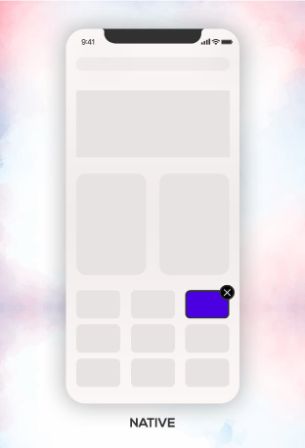
Native ads are created to fit or integrated into an app naturally. Mostly, the added elements can be sponsored content or video, aimed to promote a particular brand or product. As a result of their integration, users find these apps very interesting and less irritating. Hence, they get more popularity and generate huge revenue among app developers.
Example: Airbnb created a campaign for Ellis Island in the association with the New York Times’ T Brand Studio. It played a vital role in app history. It grabbed everyone’s eyes and attracted many customers towards them.
> Interstitial Ads
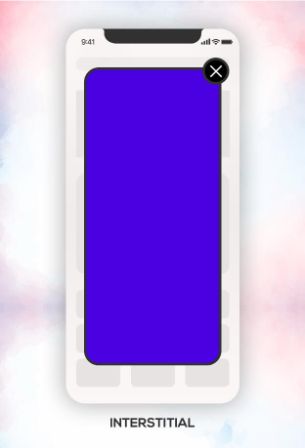
These interstitial ads are full-screen pop-up ads. It’s shown in a specific moment within an app. It is shown while opening or closing the app. The user is left with only two options – either close the ad or check out the promoted content.
Example: Emirates Airlines incorporated this interstitial ad and the result came was, over 5000 clicks to the website and 170,000 complete video views. Emirates promoted their new flying destination place, New York – Dubai, by showcasing their full-screen ad to travellers in the NY airport once connected to WiFi.
> Incentivized Ads
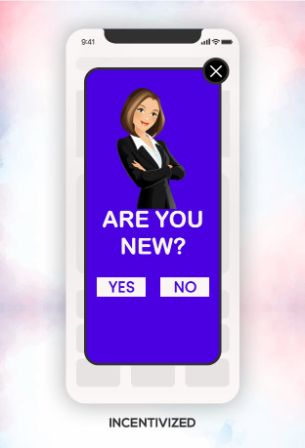
Everyone likes to be rewarded. With the help of tool, it’s now possible to reward a specific user. After reaching a certain level in-app action, ad interaction, through filling out a survey, the feature allows users to give a reward. Incentivized ads reward users for app engagement. These types of apps can increase app loyalty and user engagement. Thus, app developers increase their revenue and grain happy and loyal users from promoting their in-app currency.
Example: The RunKeeper app is the pioneer of this model. It was the first app who utilized this incentivized ad feature. It allows users to unlock exclusive rewards and features without disturbing use of the app.
2) Referral Marketing
Referral marketing is connected with the previous model of in-app advertisement to monetize your app. Referral marketing promotes a third-party product or service to generate revenue.
The information about the Affiliate Company or products or services is placed in the app and based on clicks and installs, you receive rewards. These rewards are based on a cost-per-action (CPA) model or revenue share.
The referral marketing model can be used in the following ways:
- Promote another application
- In-app advertisement
- Advertise products or services via in-app-store
There are many affiliate network companies like AdMob, Flurry which can help your app to affiliate. Also, there are some different software programs and tools that help to integrate this model.
Affiliate marketing includes:
- CPM (cost-per-mille, cost-per-impression): The payment you receive is based on the number of impressions. The advertiser is charged each 1,000 times the affiliate ad is displayed (mille is a Latin translation for thousand).
- CPC (cost-per-click): The payment you get is based on the number of clicks on a displayed app.
- CPV (cost-per-view): The payment you get is based on the number of video views or other ad interaction.
- CPI (cost-per-install): You receive a payment each time the promoted app is installed via its ad in your product.
Example: Amazon is a great example to show how affiliate marketing works. Pick any product you would like to advertise in your app and receive advertising fees based on each redirected purchase.
3) In-App Purchase & Freemium Model
In-app purchases are the most popular term used in freemium app model which allows selling a variety of virtual items directly from your app – including extra bonuses, opening new premium app content, blocking ads, game currency, and goods or unlocking game levels. All these features are managed by the app store and the app owner gets a commission from every trade.
As per the Forbes, apps with in-app purchases generate the highest revenue for their publishers.
In-app purchase strategy consists of three categories:
1) Consumable: Consumable item is a product that can be used once within the app. Example: digital currencies, health points.
2) Non-consumable: Non-consumable item is a featuring product that doesn’t expire and used permanently. Example: ad blocking, new game levels or maps.
3) Subscriptions: It allows you to unlock additional content and features for a limited period. Example: monthly or annual news/service subscription.
Example: Some apps have generated huge amounts of revenue by applying this model in their apps. The Clash of Clans game earned $1m per day on purchases, and Pokemon Go users bought in-app purchases for $1.5m daily. Within 2017, Pokemon Go’s revenue crossed over $1 billion making it the top grossing game in history.
Another example of a freemium app model is MX Player, A Video player on Google Play with ads for the free version. MX Player Pro offers the ad-free version with a small amount of its subscription.
4) Subscription Model
Subscription is a quite useful monetization strategy. It sets up revenue streams from the weekly, monthly, or annual fees for a specific service provided by the free app. The user has to pay a weekly or annual fee to get full access and unlock the content feature. This model is mostly used in cloud-based services, audio and video content providers like Google Music, Spotify, and digital news portals. Subscribers receive the content as per their chosen plan.
Only 5% of successful developers are using subscriptions to monetize their mobile apps.
Example: With 1 million customers’ subscription model, Wall Street Journal and New York Times boomed in the market.
5) Sponsorship Model
Sponsorship placement within the application can help you generate revenue for any company. It’s a profitable model to follow to make money from a free app. This model can be integrated with those apps that already have regular users. You can gain many benefits from applications with a specific market niche. Hence, you have to contact those persons who are from the same industry. You can match their brand with ads, information in the app or adapt its design to match the sponsor’s brand.
Two primary sponsorship deals:
- Equally divide revenue from the app
- Set a monthly sponsorship fee
Example: Weather Channel app utilizes this model in many ways. The app has an animated background for Home Depot, a retailer in the field of construction and household goods.
6) Crowdfunding Model
This is the new and another way to monetize app for free. In this method, start-ups and companies exchange and share ideas to raise funds for app development and marketing needs. Platforms like Kickstart, Indiegogo, CrowdFunder, Patreon, Fundable, and AppsFunder are used for this model.
Example: In 2017, 138 app ideas were crowdfunded and raised $10K to $100K on Kickstarter. As an exception, the Hello Earth game with a popular cat character generated $148K.
7) Email Marketing
Email Marketing strategy has always helped developers or app owners to increase their revenue. It’s a very old but effective technique of collecting user data, mostly emails and sending corresponding marketing materials to heat the subscribers’ interest in a product or a service. It’s the most effective strategy when you ask user email during sign-in. It helps users to get notification about new features, rewards, app news, etc.
The possible ways to collect email address are:
- Ask for the email address with a pop-up message by offering something in return. (app coins, bonus).
- A user signs up via Facebook SDK where it collects emails.
- Third-party tools to collect emails.
Example: The well-known companies like The New York Times, The New Yorker, and The Washington Post engage with their subscribers by delivering their taste of the content. The other information can only be received once it’s paid.
8) App Merchandise & E-Commerce
The e-commerce industry has taken its place in the market where people prefer to buy in a very easy manner. Many items are sold with the use of mobile apps.
With the help of Amazon tool – Merch, it offers the opportunity to earn profit from the app model. The Merch tool is an easy program which allows owners to create and sell their branded items within their apps. Amazon manages their logistics like: production, selling, payment, and delivery, while you get a share of the profit.
Example: Angry Bird app was the first successful free app merchants. The app earned $1M each month from plush bird toys alone, not continuing the t-shirts, stickers, and backpacks.
How Much Money Do Free Apps Make?
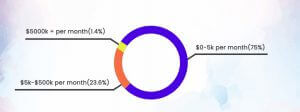
As per some report, top 25% of iOS developers and 16% of Android developers make over $5,000 per month with their free apps. This can set a benchmark in the industry. As per the number, we can state that around 20% of applications on the market are very good and brings profit, whereas, 30% of apps are fine and half of the apps are an actual useless.
If you’re good and perfect with coding and developing an app, the chances to become rich get increased. If you wish to see your app in the top list of any app store, you need to know how to make an app and how to monetize from a free app.
If you follow the prototype and go on the correct path then mobile app development can make you rich. And if you still have any doubt and worry whether you can monetize from free app and how then find out the best mobile app development company
Conclusions
Each monetization models have their own perks and drawbacks. However, trying out these strategies and analyzing what competitors are doing is a good starting point. Now, you might have plenty of questions running in your mind regarding the mobile app development and its monetization from free apps.
So if you are running with these thoughts in your mind, you should get in touch with us – mobile app development team, who will fulfil your desire by creating an amazing app. X-Byte Enterprise Solutions is the right place for all your solutions. We know your target audience and understand your requirements. Follow the above monetization methods, hire our team and let us help you build the best mobile application.
Subscribe to our newsletter
Get our articles, Blogs and case studies directly into your inbox. Your information will be confidential and secure.


.jpg)
